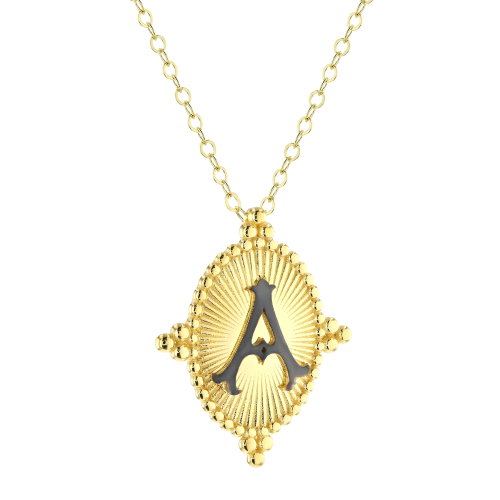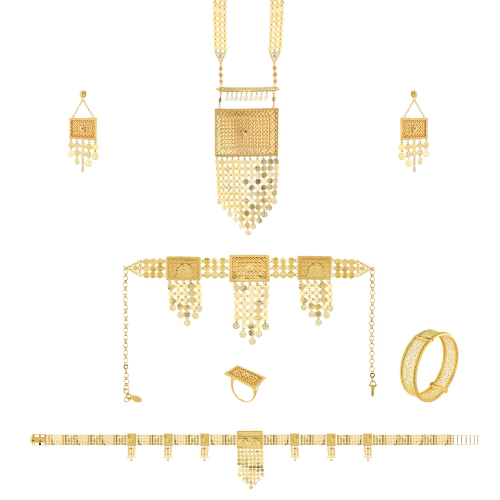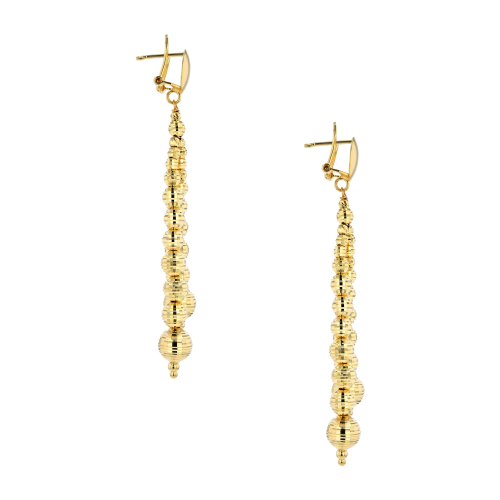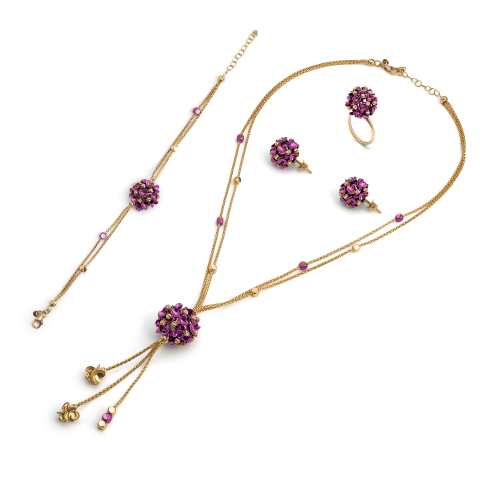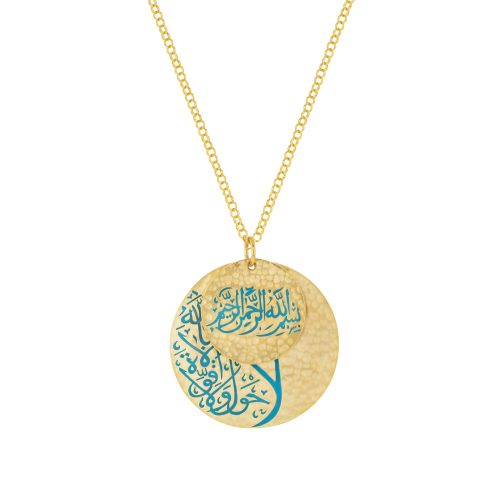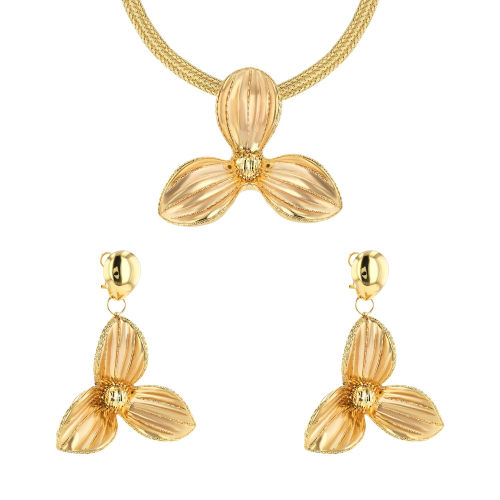The World's Rarest Gold Alloys: Purple, Blue, and Black Gold

Gold has captivated humanity for millennia with its lustrous yellow brilliance, malleability, and resistance to corrosion. While most people associate gold with its classic yellow color, modern metallurgy has unlocked a rainbow of hues through specialized alloying techniques. Among these creations, purple, blue, and black gold stand as some of the rarest and most fascinating alloys in existence. These uncommon variations not only showcase human ingenuity but also serve specialized purposes in jewelry, technology, and art that their more common counterparts cannot fulfill.
The Science Behind Gold Alloys
Before exploring these rare specimens, it's worth understanding how gold alloys work. Pure gold (24 karat) is too soft for most practical applications and is therefore typically mixed with other metals to increase its durability. Traditional gold alloys include:
- Yellow gold: Primarily pure gold with small amounts of silver and copper
- White gold: Gold mixed with nickel, palladium, or manganese
- Rose gold: Gold combined with copper to create a pinkish hue
The rarer colored golds require more complex metallurgical processes, specific elemental combinations, and in some cases, special surface treatments rather than just simple mixing.
Purple Gold: The Royal Alloy
Purple gold, sometimes called amethyst gold or violet gold, is one of the most challenging gold alloys to create and work with. This rarity makes it one of the most expensive colored golds on the market.
Composition and Properties
Purple gold is typically created by alloying gold with aluminum in a specific atomic ratio—approximately 79% gold (Au) and 21% aluminum (Al). This creates an intermetallic compound with the chemical formula AuAl₂. Unlike many gold alloys that maintain gold's natural malleability, purple gold is remarkably brittle and hard, registering around 550 on the Vickers hardness scale (compared to 25-45 for pure gold).
Production Challenges
The brittleness of purple gold presents significant challenges for jewelers. It cannot be easily worked using traditional techniques like rolling or drawing and is extremely difficult to cast. For this reason, purple gold is often used as small inlays or as gemstone-like elements within larger pieces rather than forming entire jewelry items.
Cultural Significance
The rarity and royal hue of purple gold make it particularly valuable for ceremonial objects and high-end luxury items. Its purple color—traditionally associated with royalty, power, and wealth—adds symbolic value to already precious materials. Some of the finest examples of purple gold can be found in museum collections and private holdings of royal families across the world.
Blue Gold: The Maritime Marvel
Blue gold represents another extraordinary achievement in metallurgical science. Its oceanic blue color evokes images of deep seas and clear skies, making it particularly appealing for maritime-themed jewelry and art pieces.
Composition and Creation
Unlike purple gold, blue gold is not a single intermetallic compound but can be created through several methods:
- Iron Alloying: Mixing gold with iron in specific proportions (approximately 75% gold and 25% iron) creates a subtle blue-tinted alloy.
- Gallium Alloying: Combining gold with gallium can produce a bluish-purple hue, though this alloy is extremely brittle.
- Surface Treatment: The most common commercial method involves treating white gold with oxide layers or applying specialized coatings rather than creating a true blue alloy throughout. This produces a more vibrant blue appearance but is technically a surface treatment rather than a true alloy.
Applications and Limitations
Due to its complicated production requirements, blue gold rarely appears in mass-market jewelry. When used, it's typically incorporated as an accent element alongside traditional golds. The surface-treated varieties require careful handling, as the blue layer can wear off over time with friction and exposure.
Market Presence
Blue gold remains one of the least commercially available colored golds, with only a handful of specialty jewelers offering authentic pieces. The rarity of truly alloyed blue gold makes it a collector's item, with prices to match its exclusivity.
Black Gold: The Modern Enigma
Perhaps the most striking of all gold alloys, black gold presents a dramatic contradiction to gold's natural brilliance. This mysterious material has found particular favor in contemporary jewelry design and modern luxury watches.
Creation Methods
Black gold can be produced through several distinct processes:
- Plasma-enhanced chemical vapor deposition: This high-tech approach creates a thin layer of amorphous carbon (similar to diamond-like carbon) on the gold surface, resulting in a deep black appearance.
- Electroplating: A thin layer of ruthenium or rhodium can be electroplated onto gold to create a black surface.
- Patination: Chemical treatments using sulfur compounds can blacken gold surfaces through controlled oxidation.
- Alloying: True black gold alloys can be created by combining gold with cobalt or other transition metals, though these often appear more dark gray than truly black.
Durability Considerations
The durability of black gold varies significantly depending on the production method. Surface treatments can wear off over time, especially in frequently handled pieces like rings. True black alloys tend to be more permanent but may be brittle or have other metallurgical limitations.
Contemporary Applications
Black gold has found particular popularity in several niche markets:
- High-end watchmaking: Luxury brands like Hublot and Ulysse Nardin have incorporated black gold elements in their most exclusive timepieces.
- Avant-garde jewelry: Fashion-forward designers appreciate black gold's dramatic contrast with gemstones and other colored golds.
- Technical applications: Black gold's unique optical properties make it valuable in certain scientific instruments and high-precision devices.
The Future of Rare Gold Alloys
As metallurgical science advances, we may see even more exotic gold alloys enter the market. Research continues into creating more stable versions of these rare colors and developing entirely new hues. Some scientists are exploring nanoscale structures that could impart structural colors to gold without requiring traditional alloying elements.
The advancement of 3D printing technologies may also help overcome some of the workability challenges associated with brittle gold alloys like purple gold. By building items layer by layer, even difficult-to-work materials could be fashioned into complex designs.
Investment Considerations
For collectors and investors, these rare gold alloys present interesting opportunities and challenges. Unlike traditional gold, whose value is tied closely to weight and purity, colored golds derive much of their value from craftsmanship, rarity, and aesthetic qualities. This makes them more akin to art investments than commodity holdings.
Potential investors should note that the market for these specialty alloys is far less liquid than that for traditional gold. Pieces made from purple, blue, or black gold are typically sold through specialized dealers or auction houses rather than standard precious metal markets.
Purple, blue, and black gold represent the pinnacle of metallurgical artistry—where science meets aesthetics to create something truly extraordinary. Their rarity, technical challenges, and unique visual properties ensure they remain exclusive materials available only to the most discerning collectors and connoisseurs. As symbols of human ingenuity, these unconventional alloys remind us that even the most familiar substances can reveal new facets when approached with creativity and technical skill. Whether appreciated for their scientific significance or their striking beauty, these rare gold alloys continue to push the boundaries of what we thought possible with the world's most revered precious metal.
